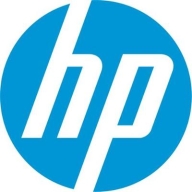

Trend Vision One Endpoint Security and HP Wolf Security are both comprehensive endpoint security solutions. Users are generally happier with the pricing and support of Trend Vision One Endpoint Security, while HP Wolf Security stands out in terms of its robust features, making it a preferable choice despite its higher cost.
Features: Trend Vision One Endpoint Security is praised for its advanced threat detection, automated response capabilities, and user-friendly interface. HP Wolf Security features strong isolation technologies, multi-layered protection, and in-depth analytics.
Room for Improvement: Users of Trend Vision One Endpoint Security desire better integration with other security tools, more frequent updates, and enhanced user documentation. HP Wolf Security users mention needing improvements in the management console, reducing false positives, and simplifying policy management.
Ease of Deployment and Customer Service: Trend Vision One Endpoint Security is reported to have a straightforward deployment process and responsive customer service. HP Wolf Security also offers ease of deployment but some users find it slightly more complex. HP Wolf Security’s customer service is highly rated, but Trend Vision One Endpoint Security’s simpler deployment process gives it a slight edge.
Pricing and ROI: Trend Vision One Endpoint Security is considered to have a more favorable setup cost and return on investment. HP Wolf Security, while more expensive, is seen as delivering substantial value due to its enhanced features. Users appreciate the lower cost of Trend Vision One Endpoint Security but acknowledge the superior ROI offered by HP Wolf Security’s advanced capabilities.

HP Wolf Security is a comprehensive cybersecurity solution that bolsters your organization's cyber-resilience on multiple fronts. With its full-stack security approach, it ensures layered protection from hardware to the cloud, providing a robust defense against cyber threats. HP Wolf Security introduces endpoint isolation, a cutting-edge feature that effectively halts threats that may go unnoticed by Next-Generation Antivirus (NGAV) and Endpoint Detection and Response (EDR) systems. Moreover, it extends its security coverage to printers, equipping them with advanced detection and self-healing capabilities to further safeguard your digital ecosystem. This integrated solution streamlines IT and security risk management, resulting in fewer alerts and false positives, and reduces the time and effort required for endpoint incident analysis and remediation. Notably, HP Wolf Security prioritizes productivity, allowing you to manage risk without disrupting the user experience, enabling worry-free work from anywhere, and offering rapid IT disaster recovery at scale.
Trend Vision One Endpoint Security delivers comprehensive antivirus, data protection, and device management. It offers robust threat detection and is deployable on-premises or via the cloud, making it versatile for endpoint security across organizations.
Emphasizing reliable endpoint security, Trend Vision One guards workstations and servers with extended detection and response features. Its machine learning-driven threat detection offers protection from malware and viruses, including zero-day threats. With seamless updates and automation, it minimizes administrative burdens, making deployment efficient. Criticisms include high resource use during scans and integration complexities, with calls for improved data loss prevention and better encryption. Users see the need for enhanced Linux support and quicker security updates.
What features define Trend Vision One Endpoint Security?In the finance sector, Trend Vision One is implemented for robust data protection and regulatory compliance. Healthcare providers rely on it for protecting sensitive patient information from cyber threats. Retailers use it for safeguarding payment systems and customer data against breaches, ensuring uninterrupted business operations.
We monitor all Endpoint Protection Platform (EPP) reviews to prevent fraudulent reviews and keep review quality high. We do not post reviews by company employees or direct competitors. We validate each review for authenticity via cross-reference with LinkedIn, and personal follow-up with the reviewer when necessary.